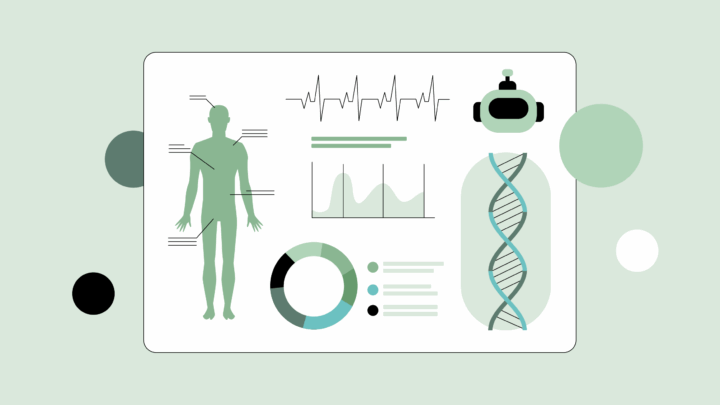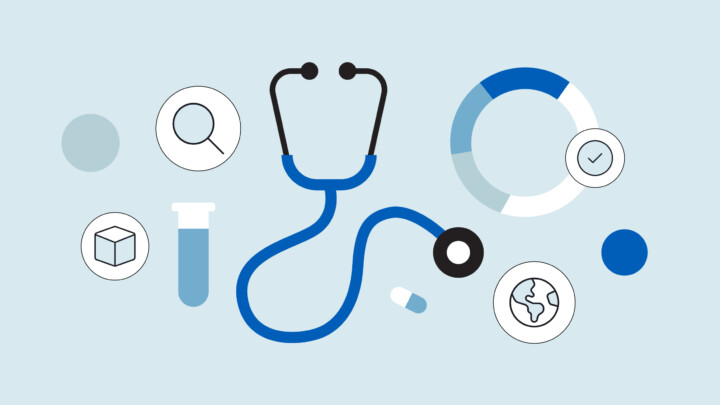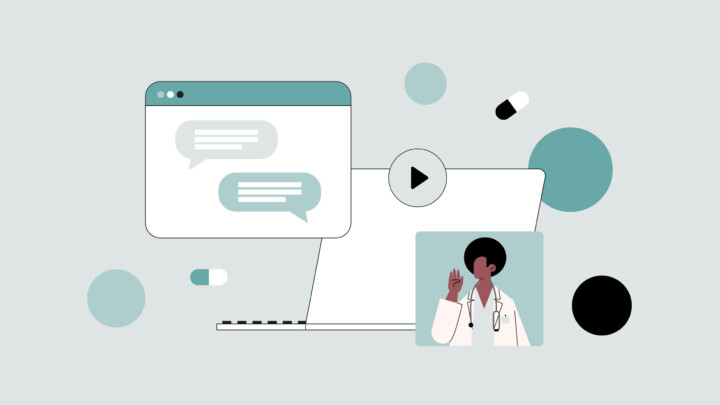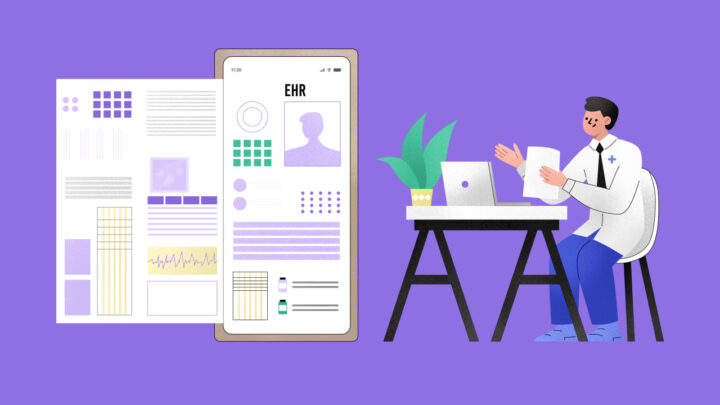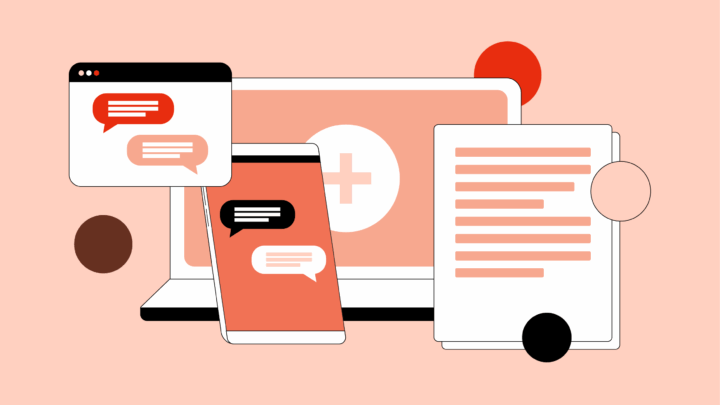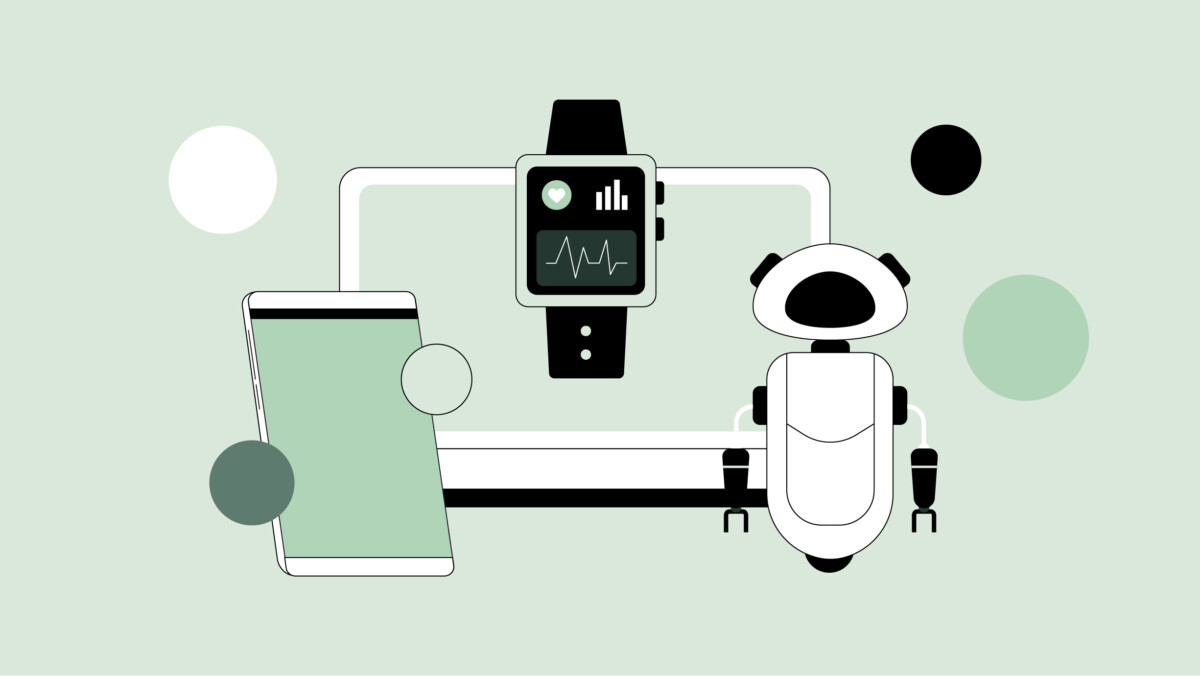
The days of clinic filing cabinets stuffed full of patient forms are gone forever. Physicians worldwide are experiencing how digital transformation is reshaping what it means to practice medicine. In fact, 62% of physicians on Sermo are already preparing for the total digitalization of healthcare. From electronic health records to AI-powered diagnostics, leveraging new digital innovations has become essential to modern medical practice and patient care.
Healthcare providers must now navigate digital health tools and systems that promise improved efficiency, reduced administrative workload, and better patient outcomes, while managing challenges such as data security and workflow disruptions.
In this guide, we explore the benefits and risks of medical digital transformation, sharing key insights from physicians on how to best prepare for, and successfully embrace, the impending change.
What is digital transformation in healthcare?
Digital transformation in healthcare represents the comprehensive integration of digital technologies into all aspects of healthcare delivery. A long time coming, the digital health transformation gained traction in the early 2000s with the adoption of electronic health records and online patient portals. The global digital health market is projected to reach over $657.5 billion by 2025, up from approximately $175 billion in 2021, driven primarily by the adoption rates of AI, the Internet of Things, big data, and cloud computing.
These digital solutions and digital tools build connected online ecosystems where information flows seamlessly between providers, patients, and health systems. That’s why successful digital transformation in health care requires understanding both technological capabilities and clinic workflow integration.
Examples of healthcare digital transformation include:
- Electronic patient records and integrated health platforms to improve efficiency
- Telemedicine to expand patient care access
- AI-powered diagnostic tools for faster diagnosis
- Wearable devices and remote patient monitoring to provide continuous health data
- Automated software-as-a-service (SAAS) providers and AI processes to streamline administrative tasks
- Advanced data analytics for better population health management
Every day, healthcare digital transformation trends and healthcare technology innovation continue to evolve. However, developing a robust digital strategy for healthcare and implementing digital innovations in healthcare remains challenging for many physicians and their practices.
Survey data on Sermo reveals varied readiness for health technologies adoption: 15% of physicians feel fully prepared, 47% somewhat prepared and adapting, 21% neutral in early adoption stages, and 10% acknowledge significant gaps in implementing digital technologies and digital tools, with just 5% not preparing for change.
Here’s what physicians on Sermo had to say about the importance of healthcare technology and why this transformation matters for patient care delivery:
A rheumatologist from the USA notes, “Digital transformation is helpful as long as it is shown to be beneficial in the long term and incorporated into EMRs without more disruption to the current workflow.”
A radiation oncologist from Spain states, “digital transformation is here to stay, but I hope that the human touch is not lost,” while an internal medicine physician from Mexico explains: “I believe that digital transformation is inevitable, and as physicians we must learn to work with these new tools without losing sight of the ethical aspects and the importance of the doctor-patient relationship, since they are only a support for our practice and not a substitute for our work as physicians.”
Benefits of digital transformation in healthcare for physicians
Physicians agree that digital technologies and digital tools can improve patient care, albeit with some challenges discussed further below. A recent Sermo survey shows 34% of physicians identify faster diagnosis and treatment as the most significant benefit, 21% point to improved access through telehealth, and 18% highlight better care coordination. The adoption of health technologies across clinical settings has led to measured improvements in several categories, with the following being the most widely reported by surveyed doctors:
Faster diagnosis and treatment
Digital health tools can accelerate diagnostic decision making by providing instant access to patient histories, lab results, and imaging. AI algorithms can analyze medical images in seconds, which were previously time-consuming tasks for clinicians. Electronic health records eliminate paper bottlenecks, enabling healthcare providers to make quicker decisions across health systems, which in turn improves patient care through innovation in healthcare technology.
Better care coordination
Healthcare digitalization transforms case collaboration across specialties and clinical settings. Integrated digital platforms and digital tools enable seamless communication between healthcare providers. Digital solutions are particularly valuable for patients with complex conditions requiring multiple specialists and high-frequency visits, ensuring coordinated patient care and improved efficiency through healthcare technology adoption.
It’s possible to see how the benefits of digital healthcare tech can compound. For example, patient history, lab results, and consultation information across organizations and specialists can now be stored in a single digital health system. If the health system integrates with AI, it can then use AI to help diagnose and analyze patient data across decades, saving physicians hours and giving them guidance on tough cases.
Improved access to care
Telehealth technology has revolutionized medical access, especially for rural patients. Even though available since the late 1990s, telehealth’s adoption grew by 766% in the first three months of the COVID-19 pandemic, transforming it into the broad-scale tech we know today. A pediatrician from Australia observes, “Telehealth allowed health care to keep operating during the pandemic. Any earlier and the technology wouldn’t have coped.” A geriatrician from the USA shares: “Technology advances and continues to advance. In my experience, it helps me follow up with patients who live out of town and can’t attend in-person appointments frequently.” The future of telemedicine continues to expand as digital healthcare platforms continue to roll out new features.
More personalized treatment plans
Digital transformation paves the way for precision medicine, tailoring treatments to individual patient factors and characteristics. Advanced analytics processes vast patient data, genetic information, lifestyle factors, lab history, and treatment responses to identify the most effective treatments with the least amount of side effects. Healthcare providers can leverage digital health insights to create optimized treatment plans, resulting in improvements in efficiency and patient outcomes through digital technologies.
Enhanced patient engagement and self-management
Digital health tools help patients take control of their own health. Patient portals provide medical record access. Wearable healthcare devices enable continuous vital sign monitoring, giving patients and healthcare providers real-time data for patient care decisions. Mobile apps support medication adherence, symptom tracking, and lifestyle modification accountability by offering trackers, messaging, and communities through digital technologies.
Challenges hindering digital transformation in healthcare
Despite promises, digital transformation faces obstacles, slowing the adoption of digital tools and health technologies.
Data privacy/security risks
Recent Sermo survey data shows that 26% of surveyed doctors cite data privacy/security risks as the biggest concern regarding healthcare technologies. Healthcare data is a prime target for cybercriminals, and with increasing digitization comes increasing vulnerabilities for hackers to exploit. As more apps, tools, and data sources are linked together, more entry points appear for cybercriminals. That’s why not only are robust security and HIPAA compliance mandatory, but team safety training for all users accessing patient data is paramount.
A psychiatrist from the USA recounts, “I have had my own data breached in some of the large data breaches from huge companies, including a credit card company and a credit data monitoring company—businesses that should have been completely safe but were not.”
System interoperability
Despite advancements, patient data is often siloed within a single health system that does not integrate with the health systems used by other specialists. 15% of physicians on Sermo say interoperability issues are the most significant barrier to implementation. When different digital systems do not cross-communicate effectively, it brings coordinated care to a halt.
“Digital tools have improved communication between specialists and members of interdisciplinary teams. However, they are often not shared by specialists, many of whom are not connected with community physicians or between community-based specialists and hospital-based care. An underlying problem is the long-standing separation between specialists and primary care. There are still major gaps in understanding each other’s practice methods and goals,” explains a canadian psychiatrist.
High implementation and maintenance costs
Financial costs are the most significant barrier for 23% of surveyed physicians. Digital transformation can be especially expensive for smaller practices and rural health systems. Beyond initial costs, organizations budget ongoing system maintenance and staff training for digital technologies. These costs create digital divides where well-resourced healthcare systems advance with digital solutions while smaller providers struggle to keep up.
Staff digital skills gap
Effective digital health technology use and digital tools adoption require competencies that many healthcare professionals are not taught during clinical training. With the rapid pace of technological shifts, many medical professionals feel frustrated trying to keep up with continuous learning. This gap creates resistance, reducing digital technology effectiveness and slowing innovation adoption in health care settings.
Impact on patient relationships
Many physicians worry that screen time creates barriers to patient connection. An internal medicine physician from the USA laments, “I think these ‘innovations’ just create more work for us.” A family medicine physician agrees, “Not convinced most of the technology is quite ready for prime time.” Preserving the human element in medicine while embracing digital tools requires thoughtful implementation, ensuring the quality of patient care.
Time required for training
Learning new digital systems and digital tools takes time away from patient care and clinical responsibilities. That’s why 7% of surveyed physicians list training time as the biggest obstacle to adoption, revealing schedule frustrations with healthcare technology adoption. Even beneficial digital solutions and health technologies face challenges when implementations don’t account for the learning curves healthcare providers need in order to master artificial intelligence and digital health tools.

Key technologies driving digital transformation in healthcare forward
A set of ubiquitous technologies and digital tools form the foundation of digital health transformation. These digital health technologies transform patient care delivery across health systems and clinical settings, demonstrating innovation in the healthcare industry through healthcare technology adoption.
Sermo’s survey shows which tool categories physicians find the most impactful for clinical workflow efficiency:
- 39% Electronic health records
- 14% Telemedicine platforms
- 12% AI-powered decision support tools
- 10% Wearable and remote monitoring digital health devices
- 7% Automated administrative health care systems
Electronic Health Records (EHRs)
EHRs form the backbone of healthcare digital transformation, providing centralized patient information and improving clinical efficiency. These digital systems and digital tools eliminate paper inefficiencies with instant access to patient histories, medications, and treatment plans to better inform providers. EHRs facilitate coordination, allowing multiple healthcare providers to view real-time updates, which supports better patient care outcomes across health systems through healthcare technology innovation.
AI-Powered decision support tools
AI for medical diagnosis and predicting patient outcomes leverages algorithms that identify patterns, improving patient care quality. A psychiatrist from the USA shares, “While I continue to have concerns regarding AI implementation on decision-making processes, I feel that AI does well with organizing information in notes or letters to improve communication.” AI for healthcare is transforming healthcare administration, promising reduced documentation burdens, easier patient scheduling, enhanced customer service, and improved efficiency for healthcare professionals.
Telemedicine platforms
In 2025, telehealth accounted for 23% of all U.S. healthcare encounters, with virtual visits surpassing 50% in select specialties, confirming telemedicine’s shift from novelty to necessity. Sermo’s comprehensive guide to telehealth provides an in-depth look at how digital healthcare platforms enable continuity of patient care, regardless of geographic location. Telemedicine benefits patients with chronic conditions, those in underserved areas, and patients facing mobility challenges. Technology advances, such as remote stethoscopes and high-definition cameras, enhance diagnostics and showcase how digital solutions improve patient care delivery and efficiency.
Wearable and remote monitoring devices
Smartwatches monitor heart rate and activity. Medical wearables track glucose, blood pressure, and oxygen saturation.The Internet of Things in healthcare encompasses connected devices continuously collecting patient health data, providing healthcare providers with valuable insights. Remote patient monitoring is the top planned area for AI implementation, with 41% of healthcare executives indicating investment intent by 2028. Remote monitoring through digital technologies enables early intervention, improving patient care outcomes
Over 1.4 billion people will use digital health platforms (including fitness trackers, smartwatches, and telehealth) in 2025. An ophthalmologist from Italy shares inside the Sermo community, “AI technology and wearable devices will change the diagnostic and follow-up processes, really exciting!”
Automated administrative systems
Administrative automation tackles paperwork bottlenecks, increasing clinical efficiency and freeing up time in health care workflows. Artificial intelligence scribing tools and digital health tools generate clinical notes automatically. An internal medicine physician from the USA explains, “We are using AI scribe in which doctors listen and talk to patients without me or us typing in front of the patient. It’s expensive but much better. No need to do multiple tasks.”
Automated scheduling and billing can reduce staff workload, demonstrating how digital solutions improve operational efficiency in health care through healthcare technology adoption and innovation. Ultimately, automated administrative systems help healthcare professionals offload routine tasks, allowing them to spend more time on patient care and patient education.
Data analytics platforms
Advanced analytics transform digital health system data into actionable insights, improving patient care. “Yes, digital transformation is improving healthcare. It allows faster and safer access to patient data through electronic health records, improves diagnosis and treatment with tools like artificial intelligence, and enhances patient follow-up through telemedicine and mobile health apps. It also optimizes hospital efficiency by reducing errors, saving costs, and improving coordination among professionals,” shares a dermatologist inside the Sermo community.
Another ophthalmologist from Spain adds: “When thoughtfully implemented, innovations like telemedicine, AI diagnostics, and integrated EHRs can enhance patient outcomes, streamline workflows, and empower engagement, though ongoing attention to privacy, interoperability, and staff training remains essential for sustained success.”
When asked what would most accelerate digital transformation, 32% of physicians on Sermo identified better system integration, 18% wanted targeted training, and 16% sought more funding. These insights highlight that successful implementation and adoption of health technologies requires addressing integration, education, and support throughout health systems with effective digital tools for clinical innovation in the healthcare industry.
Key takeaways
Digital transformation in healthcare fundamentally reimagines medical care delivery to improve patient outcomes. Across the healthcare industry, digital transformation continues to accelerate. From AI diagnoses to telemedicine access, from integrated EHRs to wearable data, digital technologies make healthcare more effective, efficient, and patient-centered. Examples of digital transformation in healthcare demonstrate how digital innovations are leading the way forward.
Physicians must understand digital healthcare trends and advances in medical technology for 2025 and beyond in order to prepare for the future and maintain safe and effective patient care.
Challenges like security concerns, interoperability frustrations, implementation costs, and training demands are affecting healthcare providers across health systems and clinical environments. However, digital transformation will continue to reshape healthcare, and physicians who embrace digital solutions and tools while maintaining patient relationships will deliver the best possible patient care. The efficiency gains, improved patient outcomes, and enhanced coordination through digital healthcare technologies justify continued investment and innovation across the healthcare industry.On Sermo, over 1 million physicians share their real-world experiences of navigating and successfully implementing digital transformation across every specialty. Join the conversation to discover which digital technologies deliver real clinical value, and share your perspective to help shape the future of medicine.

